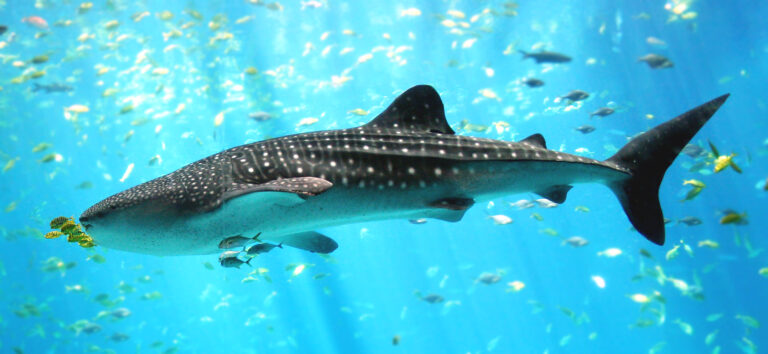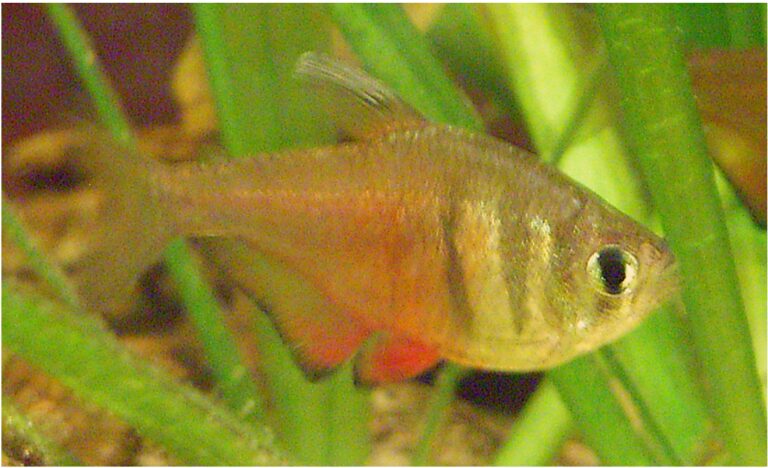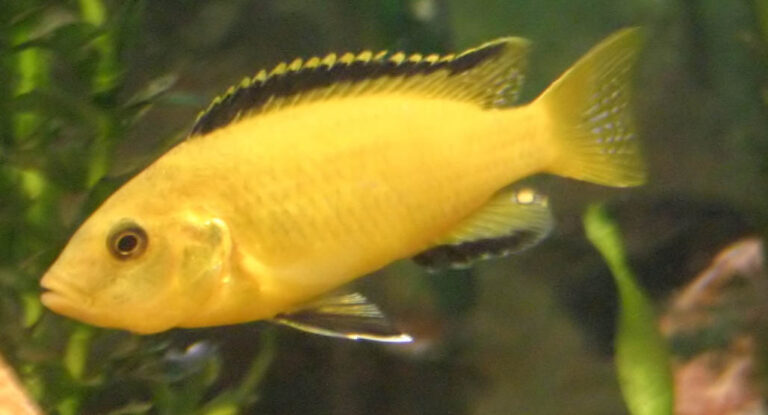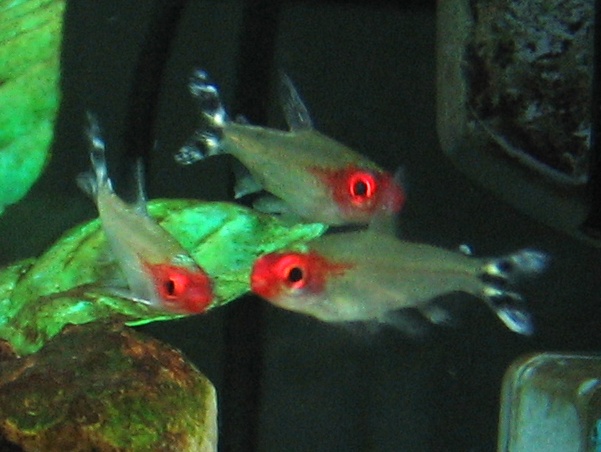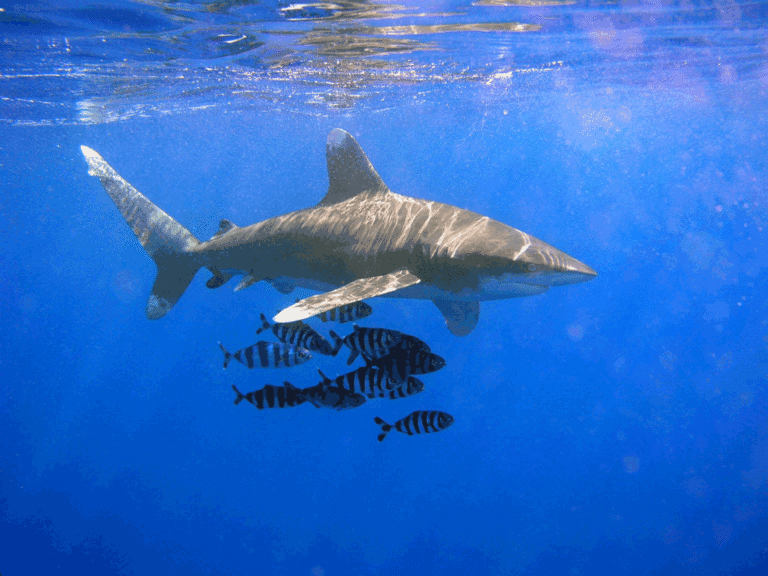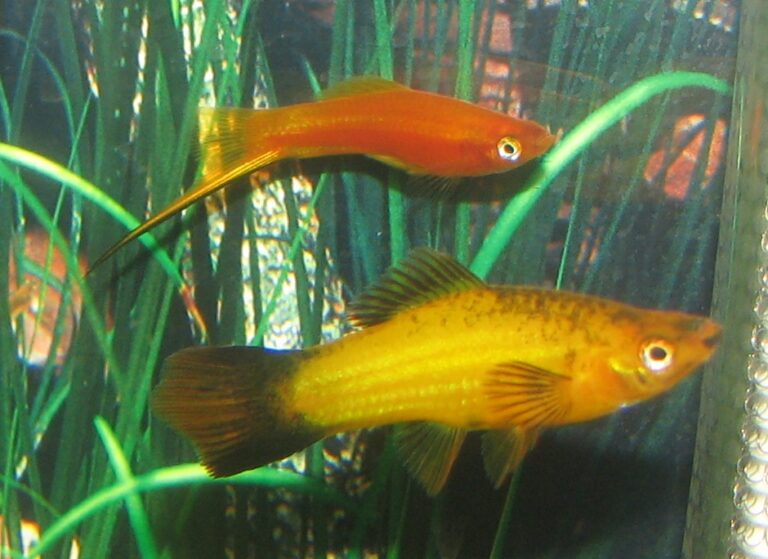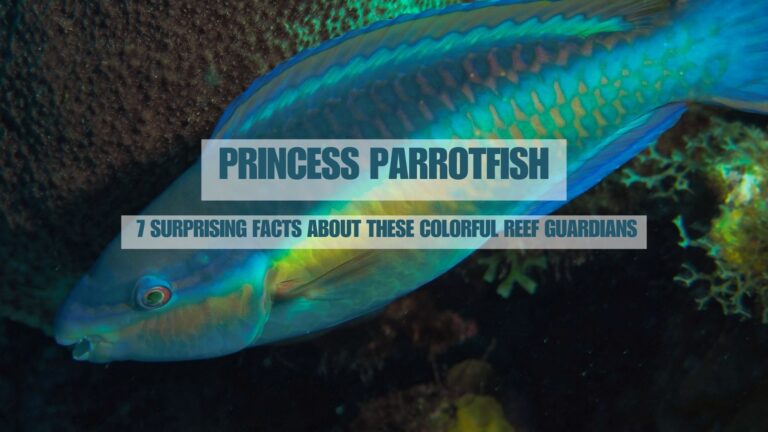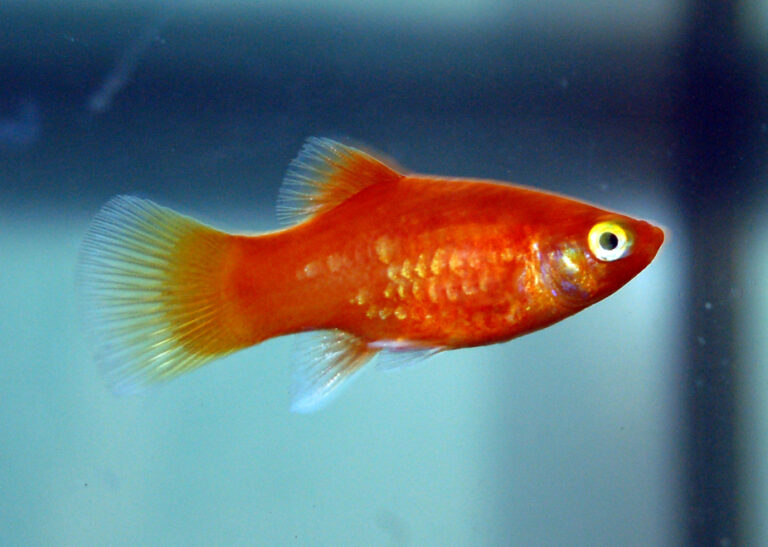Monster Muskie Fishing: Top Lures and Locations for Trophy Fish
By Adam Hawthorne | Last Modified: May 15, 2025
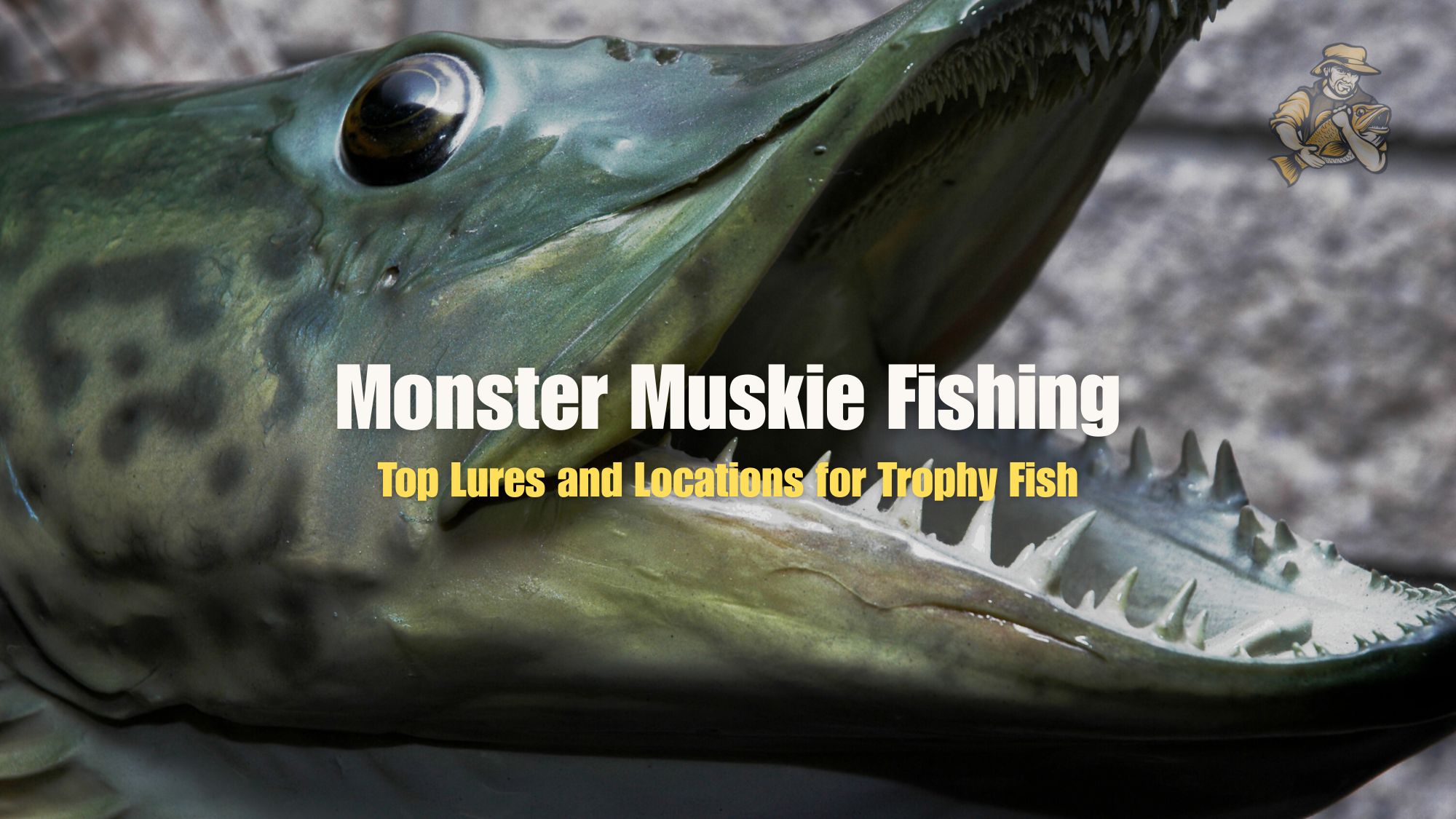
There’s nothing – and I mean absolutely nothing – that compares to the heart-stopping moment when a monster muskie follows your lure. That elongated silhouette materializing from the depths has a way of making even veteran anglers fumble their retrieves. I’ve been chasing these apex predators for over three decades across the Great Lakes region, and I’m still learning new tricks every season.
Last October, I was working a large bucktail along a weedline on Lake St. Clair when a true giant – easily surpassing 50 inches – tracked my lure right to the boat before turning away at the last second. My fishing buddy Dave (who’s guided muskie trips for 23 years) just shook his head and muttered, “That’s why they call ’em the fish of ten thousand casts.” He wasn’t wrong.
If you’re ready to join the pursuit of freshwater’s most challenging gamefish, buckle up. This isn’t bass fishing where you might catch dozens in a day. Muskie fishing requires persistence, preparation, and the right approach. Let’s break down what actually works for targeting trophy muskies.
Muskie Fishing Fundamentals: What Most Anglers Get Wrong
Before diving into specific lures and locations, we need to address some fundamentals. After watching countless newcomers struggle, I’ve noticed several critical mistakes that consistently prevent anglers from boating monster muskies.
First, many anglers underestimate the gear requirements. That medium-heavy bass setup? Leave it at home. Muskies demand heavy-duty equipment that can handle large lures and powerful fish. I learned this lesson the painful way back in 2008 when an enormous muskie snapped my inadequate rod on Leech Lake, Minnesota. That fish haunts me to this day.
Second, most anglers fish way too fast. Yes, muskies are aggressive predators, but they’re also calculating. They’ll often track a lure for multiple feet before committing. When my son Tommy started muskie fishing with me, his biggest challenge was slowing down his retrieve. Once he mastered the discipline of maintaining a deliberate pace, his follow-to-conversion ratio improved dramatically.
Third – and this is probably the most important – muskie fishing requires mental fortitude. You will go hours, sometimes days, without action. Then suddenly, WHAM! Everything happens in an instant. Being mentally prepared for long periods of inactivity followed by moments of chaos separates successful muskie anglers from the frustrated masses.
I’ve seen talented bass and walleye anglers give up on muskies after just a few outings. My neighbor Jeff, who regularly wins local bass tournaments, tried muskie fishing with me on Lake Michigan two summers ago. By noon on day two, he was ready to sell his muskie gear and go back to bass. Patience isn’t just helpful for muskie fishing – it’s absolutely essential.
The Gear You Actually Need (Not What the Catalogs Tell You)
I could write an entire article just on muskie gear (and probably will), but here’s the abbreviated version:
For rods, you want something in the 7’6″ to 9′ range with heavy to extra-heavy power. Personally, I use an 8’6″ extra-heavy St. Croix Premier for most of my casting. It’s not the most expensive option out there, but after trying rods costing twice as much, I keep coming back to it. The sensitivity-to-durability ratio just works for my style.
Reels need to be robust with smooth drags and high line capacity. I’ve been using the same Abu Garcia Revo Toro for seven years now. Sure, there are fancier options with better marketing, but this workhorse hasn’t failed me yet – even after that time I accidentally dropped it off the dock at our cabin on Lake Vermilion. After a quick rinse and re-lubrication, it worked fine.
Line choice is critical. Forget about anything under 80-pound test for leaders. I use 100-pound fluorocarbon leaders exclusively after losing what would have been my personal best to a frayed 80-pound leader back in 2018. For mainline, I run 65-80 pound braid depending on the season and water clarity.
Terminal tackle matters immensely too. Quality swivels, split rings, and hooks make a difference when dealing with fish sporting razor-sharp teeth and violent head shakes. I once lost a trophy muskie when a cheap split ring opened up during the fight – never again.
And finally, never hit the water without proper release tools. A large rubberized net, long-nose pliers, hook cutters, and jaw spreaders are non-negotiable. These fish are too valuable to handle improperly. I take release equipment more seriously than lures – you can skimp on baits, but never on the tools needed to safely handle these magnificent predators.
Best Monster Muskie Lures: What’s Actually Worth Your Money
Walk into any tackle shop in muskie country and you’ll find walls of enormous, expensive lures that look like they could double as home defense weapons. But which ones actually produce? After three decades of trial and error (mostly error), here’s what I’ve found consistently puts monsters in the net.
Bucktails: Still the Gold Standard
Despite all the innovations in muskie lures over the decades, the humble bucktail remains arguably the most productive option. There’s something about the pulsing skirt and rhythmic vibration that triggers strikes even from reluctant fish.
My go-to bucktail for the past five seasons has been the standard double-bladed Cowgirl in black/orange. The double Colorado blades create substantial resistance in the water, slowing my retrieve naturally and creating a vibration pattern that seems particularly attractive to bigger fish. I’ve boated my three largest muskies of the past decade on this exact lure.
That said, I was fishing with my brother Mike last August on Eagle Lake in Ontario when nothing was working. We’d thrown everything in our tackle boxes without a single follow. In desperation, I tied on an ancient single-bladed Mepps Musky Killer that had belonged to our grandfather – a lure I’d previously dismissed as outdated. Within 20 minutes, Mike boated a gorgeous 47-incher. Sometimes the old classics still outperform modern designs.
For bucktails, focus on:
- Double-bladed models for slower, deeper presentations
- Single-bladed versions when you need more speed or fishing shallower water
- Color patterns that provide contrast in your specific water clarity
- Weight appropriate for your desired depth range
When fishing bucktails, I’ve found that a straight retrieve with occasional pauses works best in clear water, while a more erratic action produces better in stained conditions. That’s not what most “experts” will tell you, but it’s what’s worked consistently on the waters I fish.
Glide Baits: The Follow Converters
If I had to choose just one style of lure for trophy muskie fishing, I’d probably grab a glide bait. These jointed hardbaits move with a seductive side-to-side swimming action that absolutely mesmerizes big predators. More importantly, they excel at converting follows into strikes – something every muskie angler struggles with.
The 9-inch Phantom Softail has accounted for more fish over 45 inches in my boat than any other glide bait. It’s not the most expensive option (actually far from it), but the action is perfect right out of the box. I keep at least three in my box at all times: natural sucker pattern, firetiger, and black.
Working glide baits effectively takes practice. The classic “pull and pause” technique – where you pull the rod tip down and then pause to let the bait glide – is the starting point. But I’ve developed a slight variation where I add a subtle rod tip shake during the pause. This creates a wounded prey movement that often triggers immediate strikes.
Last summer, I was fishing with my daughter Emma on the Ottawa River when she had a massive fish following her glide bait. At 6 years old, she wasn’t strong enough to work the bait properly, but her erratic, unintentional action ended up triggering a strike from a 49-inch beast – her first muskie. Sometimes beginner’s luck (or unconventional retrieves) produces magic.
Soft Plastics: The Underrated Trophy Producers
While hardcore muskie traditionalists might scoff, large soft plastic lures have become increasingly effective for trophy hunting. The natural action and versatility of these baits makes them particularly effective during tough conditions.
The Bulldawg is probably the best-known muskie soft plastic, and for good reason. The subtle tail action and substantial profile push all the right buttons for predatory fish. I was initially skeptical when these first gained popularity back in the early 2000s, but after watching a guide on Lake of the Woods land three 50+ inch fish on them in a single day, I became a convert.
What I particularly like about soft plastics is their effectiveness during cold front conditions, when traditional hard baits often go untouched. During a brutal mid-September cold front on Vermilion Lake two years ago, I managed three quality muskies on a 12-inch Bulldawg while everyone else struggled to get even a follow on conventional lures.
For soft plastics, I prefer:
- Natural colors in clear water conditions
- Black or white in low light situations
- Rigging with a single large hook rather than a treble when fishing around heavy cover
The retrieve for these is different than other lures – I use a much more subtle approach with gentle rod movements rather than aggressive jerks. Let the lure do the work.
Topwaters: Nothing Beats the Visual Thrill
If you want to experience a heart attack on the water, throw a topwater lure for muskies. Seeing a four-foot predator demolish a surface bait ranks among fishing’s most spectacular moments. While not always the most productive technique, the visual experience makes topwater fishing worthwhile even on slower days.
For years, I was devoted to traditional wooden topwaters like the Creeper. These still catch fish, but I’ve gradually shifted to the TopRaider as my primary surface lure. The cupped face creates a distinctive plopping sound that seems to draw fish from greater distances, especially in choppy conditions.
The biggest muskie I’ve ever personally landed – a 53.5-inch behemoth from Lake St. Clair – came on a black TopRaider during a stormy July evening in 2017. The conditions were terrible – 20 mph winds creating whitecaps across the bay – but something told me to stick with the topwater despite my fishing partner’s skepticism. Sometimes you just have to trust your gut against conventional wisdom.
My approach with topwaters differs from many anglers. Rather than a constant retrieve, I implement a “start-and-stop” cadence with prolonged pauses. Most strikes occur either immediately after a pause or right as the lure resumes movement. I’ve had numerous instances where a muskie tracked a topwater for 20+ feet before striking during a pause.
Jerkbaits: Technical But Deadly
Jerkbaits require more technical skill than other muskie lures but can be extraordinarily effective under the right conditions. These lures shine during early season and late fall when fish are often holding deeper but will still move up to hit a properly presented bait.
The Suick remains the standard bearer, though I’ve found the Bobbie Bait to be more consistent in the waters I typically fish. Something about the more substantial profile and weight distribution makes it more effective for my jerking style.
My brother James scoffed at jerkbaits for years, preferring the simplicity of bucktails. During our annual trip to Eagle Lake in 2019, I finally convinced him to throw a Suick along a steep rocky drop-off. His first cast produced a gorgeous 48-inch muskie – effectively ending our good-natured debate about lure selection.
The key with jerkbaits is developing the proper cadence, which is difficult to describe in text. It’s a sharp downward rod snap followed by a pause that allows the lure to rise. The rising action is what typically triggers the strike. Too many anglers jerk too frequently, never allowing the lure to complete its designed action.
Monster Muskie Locations: Finding Trophy Waters
Knowing which lures to throw is only half the battle – you need to find productive waters that hold trophy fish. While there are countless muskie fisheries across North America, not all are created equal when it comes to producing genuine monsters.
Lake St. Clair (Michigan/Ontario): The Current Heavyweight Champion
If I could fish only one muskie water for the rest of my days, Lake St. Clair would be difficult to beat. This 430-square-mile natural lake spanning the Michigan/Ontario border has rightfully earned its reputation as perhaps the finest muskie fishery on the planet. Its combination of ideal habitat, forage base, and catch-and-release ethic has created a trophy factory unlike anywhere else.
What makes St. Clair special is the consistency. While many renowned muskie waters might produce occasional giants, St. Clair regularly yields numbers of 50-inch-class fish each season. During my last three-day trip in October 2022, we boated seven muskies between 42-49 inches – a catch rate unheard of in most other trophy destinations.
The key areas to focus on are the major weedflats, particularly in the Michigan waters of Anchor Bay and the surrounding area. The expansive cabbage beds and distinct weed edges create perfect hunting grounds for apex predators. I’ve found the most productive approach is targeting the outside weed edges where they transition to slightly deeper water.
One of the most overlooked aspects of St. Clair is the importance of timing your casts when fishing defined weedlines. During peak periods (typically late summer through fall), multiple boats often work the same productive edges. Making your cast count by hitting previously unfished water often makes the difference between success and frustration.
The best advice I ever received about St. Clair came from a local guide named Bob who’s been fishing these waters for 40+ years: “Fish the conditions, not your expectations.” This meant focusing on protected areas during windy days rather than fighting to stay on historically productive spots, and being willing to abandon your planned approach when the conditions dictate.
If you’re planning a St. Clair trip, I’d recommend booking with a guide for at least your first outing. The lake’s vastness can be overwhelming, and having someone point out productive areas will save you days of frustrating exploration.
Green Bay (Wisconsin): The Rising Giant Factory
While St. Clair gets most of the publicity, Green Bay on Lake Michigan has quietly developed into one of North America’s premier trophy muskie destinations over the past 15 years. The bay’s combination of abundant forage (particularly gizzard shad), diverse structure, and limited fishing pressure creates ideal conditions for growing genuine giants.
I was initially skeptical about Green Bay’s muskie potential, having heard stories that seemed too good to be true. That changed in 2016 when my friend Tom invited me on a June trip to the lower bay. Within our first day, I witnessed two fish over 50 inches come boatside, including a true giant that we estimated at 54-55 inches. I’ve returned every summer since.
The most productive areas tend to be around the countless reefs and rock structures scattered throughout the bay. Unlike the weed-focused approach on St. Clair, Green Bay often demands targeting isolated structure like rock piles, sunken islands, and current breaks. Deep-diving crankbaits and large rubber baits tend to outperform traditional bucktails in these scenarios.
What’s particularly interesting about Green Bay is the seasonal migration patterns of its muskies. During early season (June-July), fish tend to concentrate in the southern portions of the bay. As summer progresses, many fish move northward, following forage and more comfortable water temperatures. By fall, the legendary Door County areas become particularly productive.
One essential piece of advice for Green Bay: invest in quality electronics and learn to use them effectively. The ability to identify subtle structural elements and track suspended fish makes an enormous difference in this vast system. I upgraded my electronics before my 2018 trip, and my catch rate nearly doubled as a result.
If you’re considering Green Bay for your muskie adventure, several excellent guides operate in the area.
Lake of the Woods (Ontario/Minnesota): Wild Beauty and Giant Potential
For a more wilderness-oriented muskie experience without sacrificing trophy potential, Lake of the Woods remains hard to beat. This massive body of water spanning the Ontario/Minnesota border offers incredible scenery coupled with legitimate chances at fish surpassing 50 inches.
What sets Lake of the Woods apart is its vastness and variety. With over 14,000 islands and 65,000 miles of shoreline, the lake offers limitless muskie habitat ranging from shallow, weedy bays to deep, rocky structures. This diversity means you can effectively target muskies using virtually any presentation you prefer.
My first Lake of the Woods experience came during a guys’ trip back in 2005. Despite having limited muskie experience at that time, our group managed to boat nine fish in five days, including a gorgeous 51-incher that struck a yellow Bird bucktail in just four feet of water near an island channel. That fish hooked me on muskie fishing for life.
Unlike more pressured systems, Lake of the Woods often rewards anglers willing to explore less-traveled areas. During my 2019 trip, we abandoned the well-known community spots and ventured into more remote sectors of the Canadian side. The decision paid off with consistent action including three fish over 48 inches.
The challenge with Lake of the Woods is its sheer size and complexity. Without local knowledge, finding productive areas can be daunting. I strongly recommend either hiring a guide for several days or booking with one of the established muskie-focused resorts that offer location assistance.
If you’re planning a trip, consider Musky Bay Resort on the Ontario side – they’ve been specializing in muskie fishing for decades and their guides know exactly where to target trophy fish based on seasonal patterns.
Ottawa River (Ontario/Quebec): The Historic Trophy Factory
Long before St. Clair or Green Bay gained prominence, the Ottawa River was recognized as North America’s premier trophy muskie destination. While it doesn’t receive the attention it once did, this historic fishery continues to produce exceptional muskies including genuine giant potential.
What makes the Ottawa unique is its riverine character combined with expansive sections that fish more like natural lakes. This creates diverse habitat options ranging from current-swept structure to vast weedbeds and everything in between. The river’s healthy forage base – primarily suckers, perch, and various minnow species – grows muskies to impressive proportions.
I’ve only fished the Ottawa twice – once in 2010 and again in 2021. Both trips produced quality fish, but my most recent visit revealed a fishery that seemed even healthier than a decade prior. We boated six muskies in four days, including a magnificent 52-inch fish that struck a black Cowgirl bucktail worked along a steep break from 8 to 25 feet.
The most productive approach I’ve found involves focusing on the distinct structural elements that create current breaks – points, islands, and channel edges. Unlike lake fishing where a more random approach can work, the Ottawa typically rewards anglers who understand how fish position themselves relative to current.
One piece of advice that served me well came from our guide Jean, who emphasized the importance of precise boat control. “Position is everything on the river,” he explained while meticulously using his trolling motor to maintain our relationship to a subtle current seam. True to his word, our most productive spots required exact positioning to generate strikes.
If the Ottawa interests you, consider searching Ottawa River muskie guide services to find experienced outfitters who understand this unique system. The river spans a vast area, and local knowledge dramatically increases your chances of connecting with trophy fish.
Lake Vermilion (Minnesota): Underrated Trophy Potential
While it doesn’t receive the publicity of the previously mentioned waters, Lake Vermilion in northeastern Minnesota offers excellent muskie fishing with legitimate trophy potential. What Vermilion lacks in raw numbers, it makes up for with quality and gorgeous Northwoods scenery.
My connection to Vermilion runs deeper than most other muskie waters. My grandfather built a small cabin on the lake’s western arm in the 1960s, long before muskies were officially stocked there. I’ve been fortunate to fish it consistently for over 25 years, watching it develop into a premier fishery.
Vermilion’s complex structure – featuring hundreds of islands, countless reefs, and distinct basins – creates diverse muskie habitat. The lake’s clear water demands adjustments to presentation, with natural colors and more subtle approaches typically outperforming the gaudy tactics that work in stained systems.
My most memorable Vermilion muskie came during a solo evening trip in August 2016. I was working a large soft plastic along a steep break adjacent to a small island when a massive fish struck. After a lengthy battle complicated by my solitary situation, I managed to net a 51.25-inch giant – my personal best from the lake and a fish I later learned was recognized as one of the largest caught there that season.
What makes Vermilion special beyond the fishing is the experience. Unlike the more pressured trophy destinations, you’ll often have entire structures or bays to yourself, even during peak seasons. The combination of wilderness feel with legitimate trophy potential creates a uniquely satisfying angling experience.
For newcomers to Vermilion, I’d recommend focusing on the lake’s western basin, particularly during early and late season. The eastern sections tend to fish better during mid-summer when deeper structures become more productive.
Seasonal Patterns: When to Target Monster Muskies
Understanding seasonal patterns dramatically increases your chances of connecting with genuine trophy muskies. These apex predators follow distinct seasonal movements, and aligning your approach with these patterns is often the difference between success and frustration.
Early Season (Post-Spawn) Opportunities
The immediate post-spawn period – typically late May through June in most northern waters – presents unique opportunities for muskie anglers. While conventional wisdom suggests this is a recovery period when fish feed minimally, my experience indicates otherwise.
During a late May trip to Eagle Lake in 2018, we found numerous large fish in extremely shallow water – often 2-4 feet – relating to emerging vegetation. These post-spawn fish were surprisingly aggressive, with our boat landing seven quality muskies over three days, including a magnificent 50.5-inch female that still showed slight spawning marks.
The key during this period is downsizing presentations and increasing retrieve speed. I’ve found 6-8 inch soft plastics and smaller bucktails significantly outproduce larger offerings during the post-spawn phase. This contradicts the “bigger is better” mantra many muskie anglers live by, but results speak for themselves.
Focus on shallow warming bays, particularly those with emerging weed growth but access to deeper water. Fish will often use these areas as transition zones between spawning sites and summer locations. My most consistent producer during this period has been a simple Mepps Musky Killer in-line spinner – a lure many consider too small for serious muskie fishing.
Summer Patterns: Structure and Suspended Fish
As water temperatures climb through July and August, muskie location becomes more predictable but often more technically challenging. During peak summer, muskies typically establish consistent patterns relating to specific structural elements.
My most productive summer pattern focuses on distinct structural transitions – particularly the edges of large flats where they drop into deeper basins. These transitional zones concentrate both muskies and forage species. During a July trip to St. Clair in 2020, every single one of our eight muskies came from this precise type of location.
Summer also introduces the challenge of suspended fish – muskies holding in the water column rather than relating directly to structure. These fish can be incredibly difficult to locate and pattern. I’ve found large rubber baits like the 10″ Medusa worked through the suspended zone often trigger strikes when nothing else will.
One summer tip that’s served me well: pay extraordinary attention to subtle changes in conditions. A passing cloud bank, slight increase in wind, or minor barometric change can trigger brief feeding windows. During an August trip to Green Bay, we went from zero action to boating three muskies in 45 minutes when a small storm front approached – then back to nothing once it passed.
Fall Trophy Time: The Legitimate Giant Season
If your primary goal is a true monster muskie – something pushing or exceeding 50 inches – fall is unquestionably prime time on most waters. From mid-September through ice-up, muskies typically feed aggressively to build reserves for winter.
My most successful fall pattern involves focusing on the last major structural element adjacent to deep wintering areas. In many lakes, this means main-lake points, deep weedlines, or rock structures with immediate access to basin areas. During fall, I’ve found larger presentations – 10″ soft plastics, large glide baits, and magnum bucktails – consistently outproduce smaller offerings.
The fall approach demands patience and persistence. You’ll likely see fewer fish than during summer, but the specimens encountered tend to be significantly larger. During a late October trip to Lake of the Woods in 2017, we only raised five muskies over three days – but four exceeded 48 inches, including a true giant we estimated at 54-55 inches (unfortunately lost at boatside).
Pay particular attention to weather during fall outings. Major cold fronts typically shut down activity temporarily, while stable periods following fronts often produce exceptional fishing. Some of my most memorable fall muskies have come on those perfect days featuring light winds, stable barometer, and temperatures slightly warmer than preceding days.
Monster Muskie Fishing FAQ
What’s the best time of day to catch trophy muskies?
In my experience, dawn and dusk definitely produce more consistently than mid-day hours. However, don’t ignore night fishing – some of my largest muskies have come after dark, particularly during hot summer periods. I’ve had exceptional success during the first two hours after sunset in July and August using black bucktails and topwaters.
That said, my personal best muskie – that 53.5-inch St. Clair giant – struck at 1:30 in the afternoon during bright, sunny conditions. Muskies can be caught anytime, so never avoid fishing mid-day if that’s when you have available time.
How important is the moon phase for muskie fishing?
After tracking my catches across three decades, I’ve found lunar influence exists but is vastly overrated. Major and minor feeding periods calculated from solunar tables do seem to increase activity slightly, but weather conditions and seasonal patterns are far more influential.
During a full moon period on Vermilion last September, we found fish unusually active during night hours, boating three quality muskies while casting black bucktails between 10pm and midnight. However, attempting the same approach during a quarter moon phase two weeks later produced nothing.
What’s the minimum leader length needed for muskie fishing?
Never use less than 12 inches of steel, titanium, or fluorocarbon leader material, with 14-18 inches being ideal for most applications. After losing that trophy fish to a frayed leader back in 2018, I switched exclusively to 18-inch, 100-pound fluorocarbon leaders and haven’t had a leader failure since.
Some anglers use longer leaders (24+ inches), but I find these hamper lure action, particularly with glide baits and jerkbaits where movement is critical. The exception is when using quick-strike rigs for live bait, where leaders often extend to 36 inches or more.
Are expensive muskie rods worth the investment?
After using everything from budget models to high-end offerings exceeding $500, I’ve found diminishing returns beyond the $200-250 range for most anglers. My primary casting rod is a St. Croix Premier in the mid-$200 range, and it’s handled hundreds of muskies without issue.
That said, higher-end rods typically offer better sensitivity, which matters when fishing subtle presentations like jerkbaits or during cold-water periods when strikes can be incredibly light. If you’re serious about muskie fishing and can afford it, one premium rod for finesse presentations makes sense alongside more moderately priced options for general use.
What’s the most underrated muskie lure?
The original Suick jerkbait continues to produce when many flashier, newer options fail. Despite being developed in the 1930s, its unique rising action during the pause triggers something primal in muskies.
I was initially dismissive of these wooden lures, preferring more modern options. During a tough day on Lake of the Woods in 2015, our guide suggested I try an old Suick he had rigged up. My first cast produced a 46-inch fish that had previously ignored multiple presentations with more contemporary lures. Since then, I always keep at least two in my box.
Final Thoughts on Monster Muskie Fishing
After three decades chasing these magnificent predators, I’ve come to appreciate that muskie fishing is as much about the journey as the destination. The reality is that genuine trophy specimens – those exceeding 50 inches – represent a lifetime achievement for most anglers. Even on the finest waters, connecting with such fish requires persistence, proper approach, and often a touch of good fortune.
What I value most about muskie fishing isn’t measured in inches but in experiences – those heart-stopping moments when a massive fish materializes behind your lure, the camaraderie shared during long days with minimal action, and the occasional triumph when everything aligns perfectly.
If you’re just beginning your muskie journey, temper your expectations while maintaining your enthusiasm. Focus on the process rather than results, learn from each encounter, and celebrate the incremental progress that eventually leads to that fish of a lifetime.
For those already dedicated to the pursuit, you understand the addiction. There’s simply nothing in freshwater fishing that compares to the moment when a true monster muskie crashes your lure after hours of seemingly fruitless casting. That singular moment makes every sore muscle, every equipment expense, and every fishless day entirely worthwhile.
Whether you’re targeting the legendary waters mentioned in this article or exploring your local muskie fishery, approach each outing with patience, persistence, and proper preparation. The “fish of ten thousand casts” may demand extraordinary effort, but the rewards – both in memorable fish and lifelong experiences – justify every moment spent in pursuit.

Meet Adam Hawthorne
I’m a lifelong fishing enthusiast who’s spent years exploring rivers, lakes, and oceans with a rod in hand. At Fishing Titan, I share hands-on tips, honest gear reviews, and everything I’ve learned about fish and ocean life, so you can fish smarter and enjoy every cast.
Share:

Meet Adam Hawthorne
I’m a lifelong fishing enthusiast who’s spent years exploring rivers, lakes, and oceans with a rod in hand. At Fishing Titan, I share hands-on tips, honest gear reviews, and everything I’ve learned about fish and ocean life, so you can fish smarter and enjoy every cast.
Related Articles
-
Whale Shark
The whale shark (*Rhincodon typus*) stands as the ocean’s largest fish species, representing one of nature’s most remarkable gentle giants. Despite its imposing size, reaching…
-
Flame Tetra
The Flame Tetra (Hyphessobrycon flammeus) stands as one of the most recognizable and beloved freshwater aquarium species in the characin family. This vibrant South American…
-
Yellow Lab Cichlid
The Yellow Lab Cichlid (*Labidochromis caeruleus*) stands as one of Africa’s most recognizable freshwater fish species, distinguished by its vibrant golden-yellow coloration and peaceful temperament…
-
Rummy Nose Tetra
The Rummy Nose Tetra stands as one of the most distinctive and recognizable small freshwater fish species in South American river systems. Known scientifically as…
Fish Species
-
Oceanic Whitetip Shark
The Oceanic Whitetip Shark (*Carcharhinus longimanus*) stands as one of the ocean’s most formidable and recognizable apex predators, distinguished by its distinctive white-tipped fins and…
-
Swordtail Fish
The Swordtail Fish (Xiphophorus hellerii) stands as one of the most recognizable and beloved species in the aquarium trade, distinguished by its vibrant coloration and…
-
Princess Parrotfish: 7 Surprising Facts About These Colorful Reef Guardians
When it comes to the underwater world, few fish capture my imagination quite like the princess parrotfish. The first time I encountered one was during…
-
Coral Platy
The Coral Platy (Xiphophorus maculatus) represents one of the most recognizable and beloved freshwater aquarium fish in the world. This vibrant member of the Poeciliidae…

